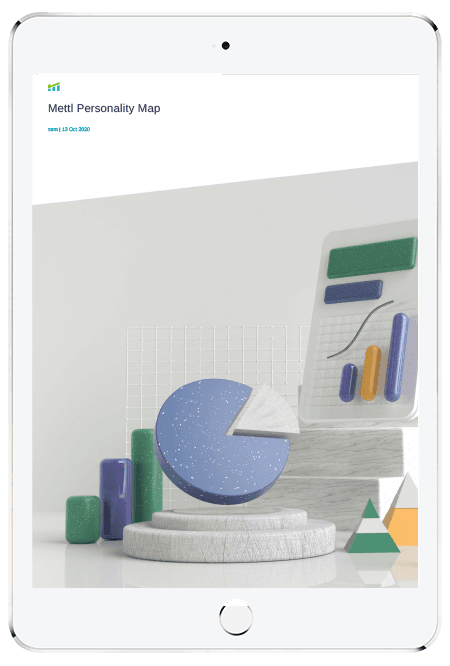Teradata Test to Hire the Best Teradata Developers in the Industry
The Teradata test from Mercer Mettl is used to evaluate the Teradata and Relational Database Management System(RDBMS) skills of an aspirant. The Teradata online test is holistically designed to assess a candidate's domain proficiency in Teradata.
Inside This Assessment
The Teradata online test from Mercer Mettl is intended for thoroughly assessing the RDBMS and Teradata skills of a candidate. Tech recruiters can use this Teradata test for screening candidates and testing their domain abilities.
Designed by subject matter experts, this test evaluates candidates on RDBMS and Teradata developer schema, among other technologies.
This Teradata Skills test consists of 30 multiple choice questions to be answered in 45 minutes.
The following roles can be primarily evaluated using this Teradata online test:
- Teradata V2R5 Application Developer (Beginner)
- Teradata V2R5 Application Developer (Intermediate)
- Teradata Developer
SKILL LIBRARY
Teradata Competency Framework
Get a detailed look inside the test
Teradata Developer Competencies Under Scanner
Teradata Developer
Competencies:
This Teradata test evaluates skills in RDBMS ER data model, normal forms, ACID properties and transactions. The test also evaluates skills in ANSI SQL functions, string and aggregate, queries and subqueries, view and index.
This teradata test assess skills in Teradata Developer schema, string manipulation, built-in functions, table types, compression, hashing algorithm, join index, stored procedure, OLAP functions and query optimization.
Customize This Test
Flexible customization options to suit your needs
Choose easy, medium or hard questions from our skill libraries to assess candidates of different experience levels.
Add multiple skills in a single test to create an effective assessment. Assess multiple skills together.
Add, edit or bulk upload your own coding questions, MCQ, whiteboarding questions & more.
Get a tailored assessment created with the help of our subject matter experts to ensure effective screening.
The Mercer | Mettl Advantage
Frequently Asked Questions (FAQs)
Yes, it is possible. Please contact Mercer | Mettl for assistance.
Yes, it can be done. In case of further information, please write to mettlcontact@mercer.com
Those candidates who are looking for a job in this field can prepare in advance for the interviews. Here, we have presented a list of the most commonly asked questions that will help students get an idea about the kind of questions that are being asked.
1) Basic Teradata interview questions
a)What is Teradata, and what are its features?
Teradata is RDBMS that is useful for developing wide-scale data warehousing applications. It utilizes the concept of parallelism. It is an open system and comes with a lot of intriguing features: Teradata viewpoint, automated temporal analytics, data compression, and performance compression.
b)What are the different types of tables that are supported by Teradata?
Given below are different table types that are supported by Teradata:
Derived table
Permanent table
Global Temporary table
Volatile table
c)What are the main components of the Teradata system?
Listed below are the major components of the Teradata system:
Access Module Processor (AMP): It finds its applications in processes such as storing the actual data and retrieving the agent in the database system. AMP makes it easy to physically read and write the data to disks or storage location
Message Passing layer (MPL): It acts as a networking layer in the Teradata Database System. It is crucial for establishing communication between the AMP, parsing engine, and nodes.
Nodes: A node could act as an individual server and a basic unit for the Teradata system. It primarily consists of its own copy of the OS, memory, CPU, disk space, and RDBMS.
Parsing engine: this engine is meant for receiving the client-server request and creating the implementation plan accordingly.
d)Mention a few of the ETL tools that come under Teradata?
The common ETL tools that are used are Informatica, data stage, and SSIS.
e)What is the primary index in Teradata?
This mechanism identifies where the data is located in a Teradata system. Each table in Teradata should have the primary index specified. There are two types of primary indexes: unique index and non-unique primary index.
2) Advanced Teradata Interview Questions
a)What’s the difference between the primary key and the primary index?
A primary key is optional in Teradata, whereas a primary index is crucial for the table. There are no limitations for tables and columns in the primary key, whereas the primary index limits itself to 64 tables or columns. Unlike the primary index, the primary key permits null or duplicate values in tables.
b)What are the benefits of the partitioned primary index(PPI)?
PPI is an indexing mechanism that’s used in improving query performance. Some of the advantages of PPI are enlisted as follows:
It makes adding the new data and deleting the old one an easy task
It enables us to access the large table in significantly less time
c)What is an UPSERT command?
UPSERT command is used to update the rows that are present and insert rows that don’t exist. In Teradata, this is achievable through MERGE or UPDATE-ELSE-INSERT.
d)Explain skewness and the purpose of NULLIF Expression in Teradata?
Skewness describes the uneven distribution of data on access module processors and represents skewness in terms of percentage. NULLIF function enables the comparison of the two arguments. If the two arguments match, it returns null, or else it returns the first argument.

